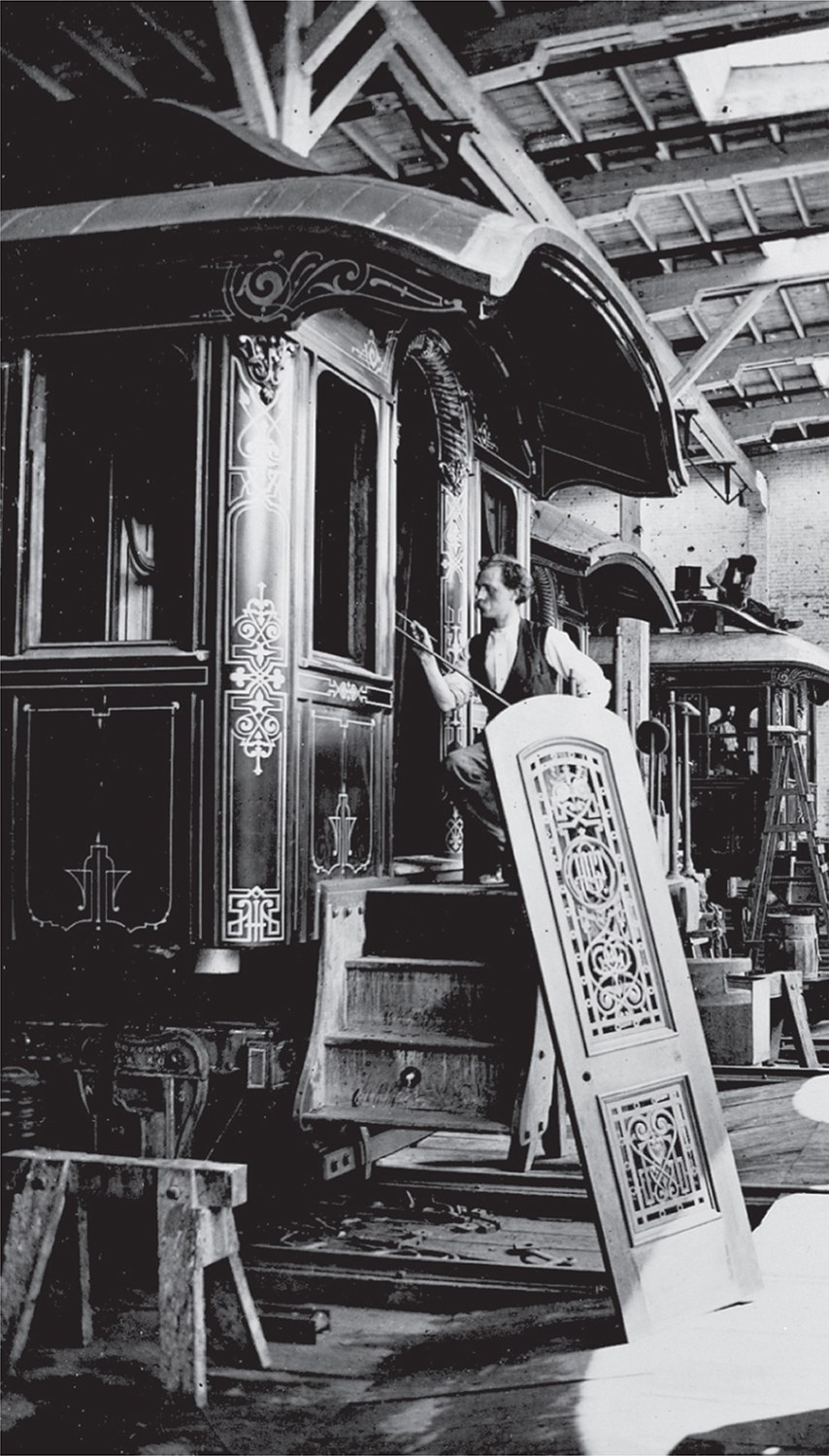Eugene V. Debs and the Pullman Strike
The economic depression that began in 1893 swelled the ranks of the unemployed to three million, almost half of the working population. “A fearful crisis is upon us,” wrote a labor publication. Nowhere were workers more demoralized than in the model town of Pullman, on the outskirts of Chicago.
In the wake of the Great Railroad Strike of 1877, George M. Pullman, the builder of Pullman railroad cars, moved his plant and workers nine miles south of Chicago and built a model town. The town of Pullman boasted parks, fountains, playgrounds, an auditorium, a library, a hotel, shops, and markets, along with 1,800 units of housing. Noticeably absent was a saloon.

The housing in Pullman was clearly superior to that in neighboring areas, but workers paid a high price to live there. Pullman’s rents ran 10 to 20 percent higher than housing costs in nearby communities. In addition, George Pullman refused to “sell an acre under any circumstances.” As long as he controlled the town absolutely, he held the powerful whip of eviction over his employees and could quickly get rid of “troublemakers.” Although observers at first praised the beauty and orderliness of the town, critics by the 1890s compared Pullman’s model town to a “gilded cage” for workers.
The depression brought hard times to Pullman. Workers saw their wages slashed five times between May and December 1893, with cuts totaling at least 28 percent. At the same time, Pullman refused to lower the rents in his model town, insisting that “the renting of the dwellings and the employment of workmen at Pullman are in no way tied together.” When workers went to the bank to cash their paychecks, they found that the rent had been taken out. One worker discovered only forty-
At the heart of the labor problems at Pullman lay not only economic inequity but also the company’s attempt to control the work process, substituting piecework for day wages and undermining skilled crafts workers. During the spring of 1894, Pullman’s desperate workers, seeking help, flocked to the ranks of the American Railway Union (ARU), led by the charismatic Eugene V. Debs. The ARU, unlike the skilled craft unions of the AFL, pledged to organize all railway workers—
George Pullman responded to union organization at his plant by firing three of the union’s leaders the day after they protested wage cuts. Angry men and women walked off the job in disgust. What began as a spontaneous protest in May 1894 quickly blossomed into a strike that involved more than 90 percent of Pullman’s 3,300 workers. Pullman countered by shutting down the plant. In June, the Pullman strikers appealed to the ARU to come to their aid. Debs pleaded with the workers to find another solution. But when George Pullman refused arbitration, the ARU membership voted to boycott all Pullman cars. Beginning on June 29, switchmen across the United States refused to handle any train that carried Pullman cars.
The conflict escalated quickly. The General Managers Association (GMA), an organization of managers from twenty-
The boycott remained surprisingly peaceful. In contrast to the Great Railroad Strike of 1877, no major riots broke out, and no serious property damage occurred. Debs fired off telegrams to all parts of the country advising his followers to avoid violence and respect law and order. But the nation’s newspapers, fed press releases by the GMA, distorted the issues and misrepresented the strike. Across the country, papers ran headlines like “Wild Riot in Chicago” and “Mob Is in Control.” (See “Documenting the American Promise.”)
In Washington, Attorney General Richard B. Olney, a lawyer with strong ties to the railroads, was determined to put down the strike. In his way stood the governor of Illinois, John Peter Altgeld, who, observing that the boycott remained peaceful, refused to call out troops. To get around Altgeld, Olney convinced President Grover Cleveland that federal troops had to intervene to protect the mails. To further cripple the boycott, two conservative Chicago judges issued an injunction so sweeping that it prohibited Debs from speaking in public. By issuing the injunction, the court made the boycott a crime punishable by a jail sentence for contempt of court, a civil process that did not require a jury trial. Even the conservative Chicago Tribune judged the injunction “a menace to liberty . . .
Olney’s strategy worked. President Grover Cleveland called out the army. On July 5, nearly 8,000 troops marched into Chicago. Violence immediately erupted. In one day, troops killed 25 workers and wounded more than 60. In the face of bullets and bayonets, the strikers held firm. “Troops cannot move trains,” Debs reminded his followers, a fact that was borne out as the railroads remained paralyzed despite the military intervention. But if the army could not put down the boycott, the injunction did. Debs was arrested and imprisoned for contempt of court. With its leader in jail, its headquarters raided and ransacked, and its members demoralized, the ARU collapsed along with the boycott. Pullman reopened his factory, hiring new workers to replace many of the strikers and leaving 1,600 without jobs.
In the aftermath of the strike, a special commission investigated the events at Pullman, taking testimony from 107 witnesses, from the lowliest workers to George M. Pullman himself. Stubborn and self-
From his jail cell, Eugene Debs reviewed the events of the Pullman strike. With the courts and the government ready to side with industrialists in defense of private property, strikes seemed futile, and unions remained helpless. Workers would have to take control of the state itself. Debs went into jail a trade unionist and came out six months later a socialist. At first, he turned to the Populist Party, but after its demise he formed the Socialist Party in 1900 and ran for president five times.
REVIEW What led to the labor wars of the 1890s?